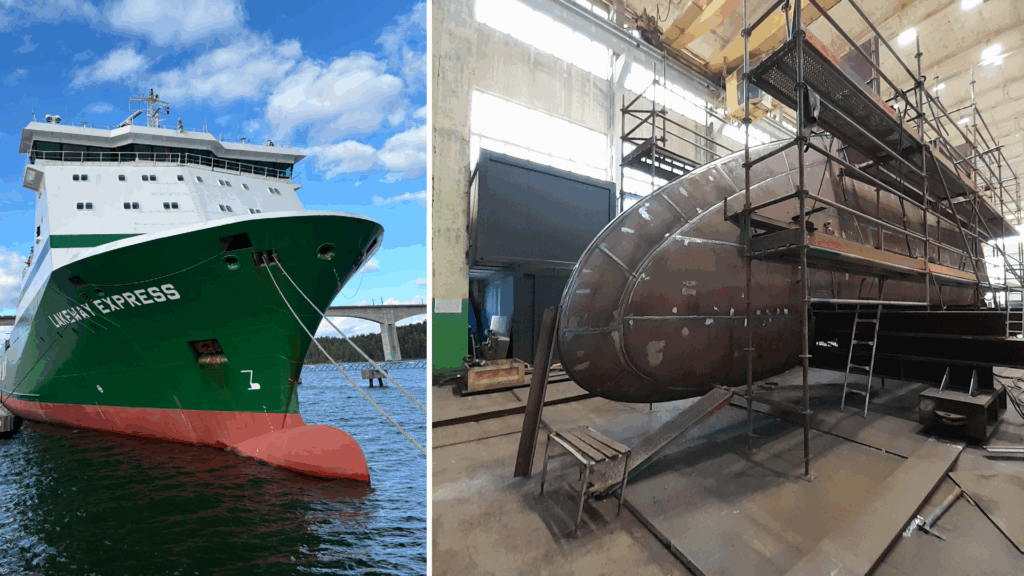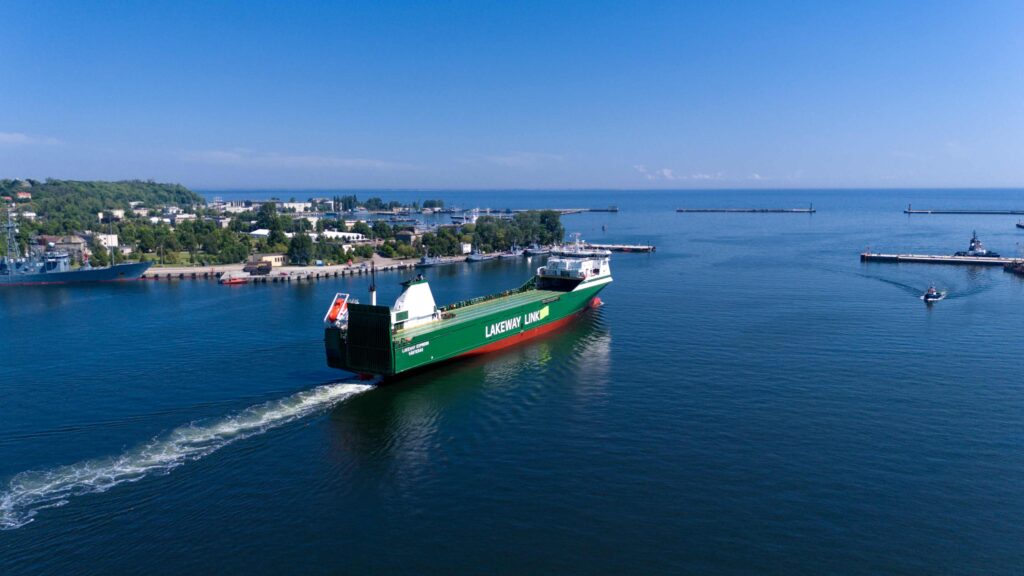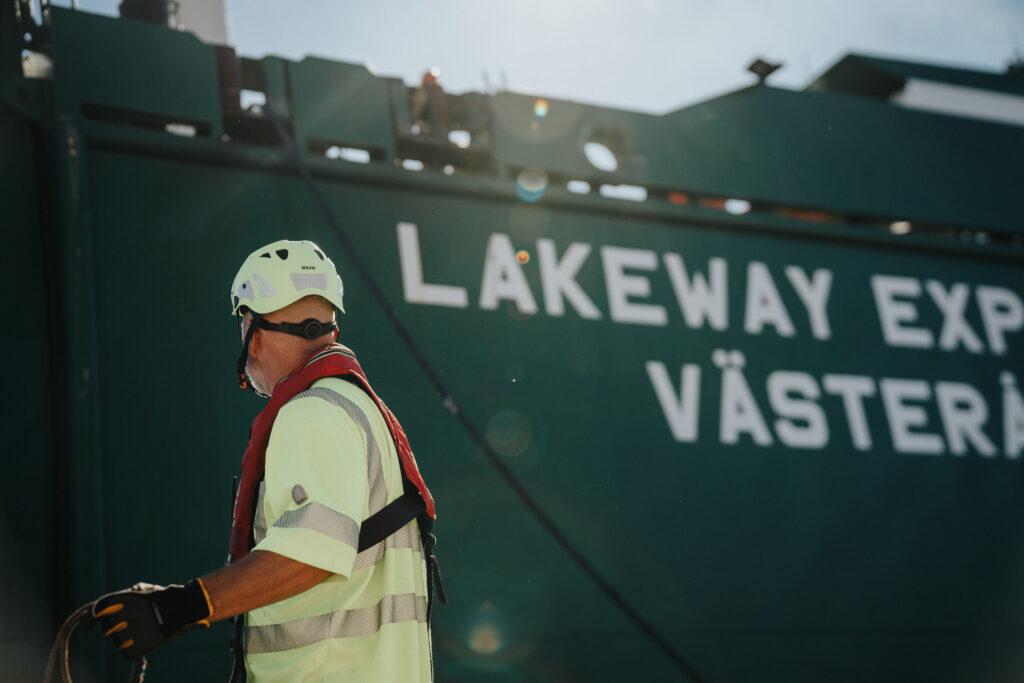Meanwhile, rail networks across Europe are also operating close to saturation in many areas and struggle to absorb additional freight volumes. Combined, these overburdened systems make it clear: Europe needs to move more cargo off its roads and rails — and onto the sea.
Why sea freight is the smarter alternative
Sea freight offers several advantages that land-based modes struggle to match:
- Available capacity: While roads and railways are overloaded, sea lanes remain underutilized and can carry massive volumes of freight in one shipment — a single RoRo vessel can replace hundreds of trucks.
- Greater efficiency: Ships operate on fixed schedules, avoiding traffic jams, delays, and the unpredictability of overland routes.
- Lower emissions: Sea freight is up to four times more carbon-efficient than road transport per ton-kilometer, making it an essential part of achieving climate goals.
- Fewer trucks – less impact: Each trailer moved by sea reduces road congestion, noise, pollution, and infrastructure wear. It also helps address Europe’s ongoing shortage of truck drivers.
A direct link: Gdynia to Södertälje by sea
One example of this modal shift is Lakeway Link’s RoRo service operating between Gdynia, Poland, and Södertälje, Sweden. This connection offers a direct maritime corridor from continental Europe into the heart of Sweden’s industrial regions — just south of Stockholm.
- Three weekly departures in each direction
- 22-hour transit time crossing the Baltic Sea
- Capacity for 100+ trailers per voyage
The service reduces road dependency for northbound freight and offers a more responsible and efficient alternative to long-haul trucking through Europe. It also helps solve driver shortage issues, as trailers are shipped unaccompanied.
Why RoRo works — Especially for heavy cargo and strategic regions
RoRo (roll-on/roll-off) shipping is especially effective for high and heavy cargo such as construction machinery, wind turbine components, or industrial equipment. Instead of complex crane lifts or dismantling oversized items, cargo is simply driven or rolled directly on and off the vessel — reducing handling time, risks, and cost.
Beyond the method itself, the route between Gdynia and Södertälje is strategically positioned to serve key industrial and commercial regions.
- Södertälje provides quick access to central and northern Sweden, including Bergslagen, Uppsala, Gävle, Värmland, and Norway.
- Gdynia, a major Baltic port, connects seamlessly to inland transport networks and serves as a key transshipment hub for global maritime flows.
Together, the Gdynia–Södertälje corridor supports efficient movement of both standard and complex cargo while connecting two high-capacity logistics regions.
The future of freight is at sea
With Europe’s roads and railways hitting their limits, shifting cargo to sea is not just beneficial — it’s necessary. Sea freight offers the available capacity, lower climate impact, and reliability today’s supply chains require.
Want to explore a smarter way to move cargo? Contact Lakeway Link to learn how we can support your shift from road to sea.



